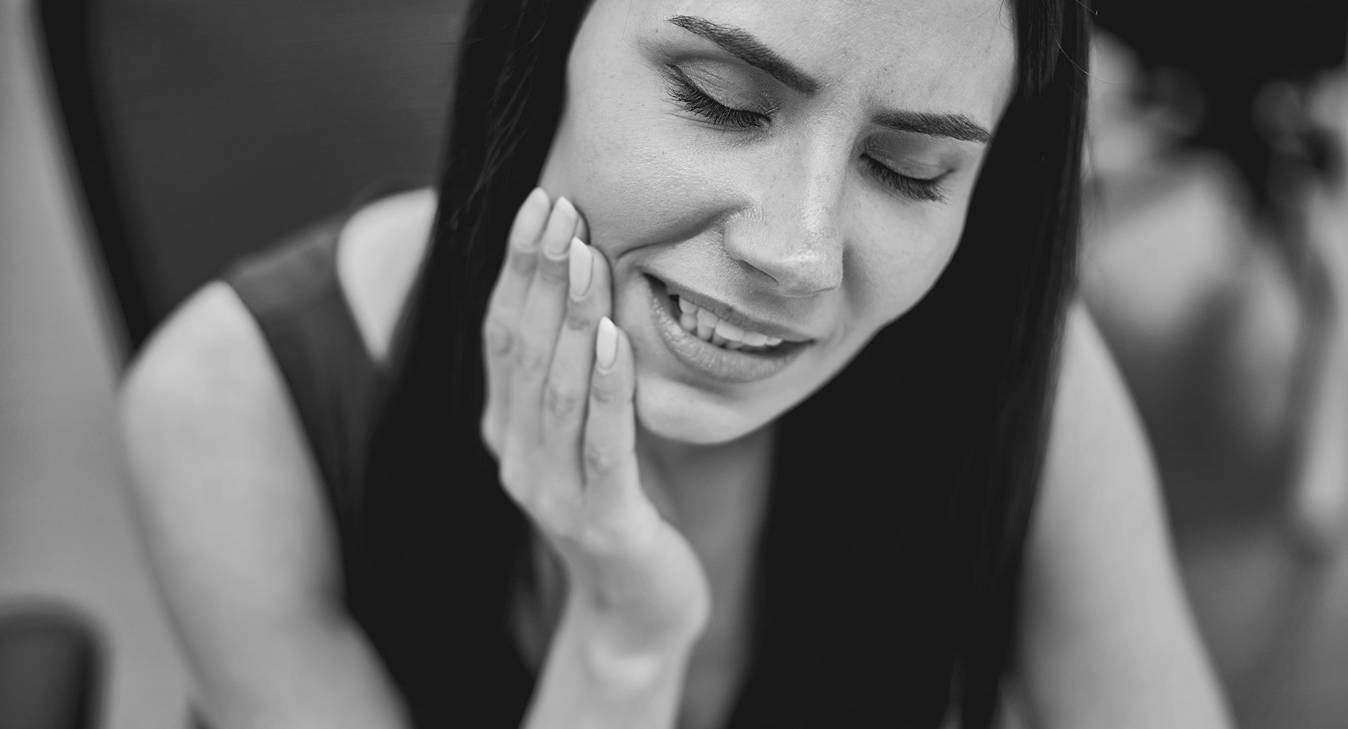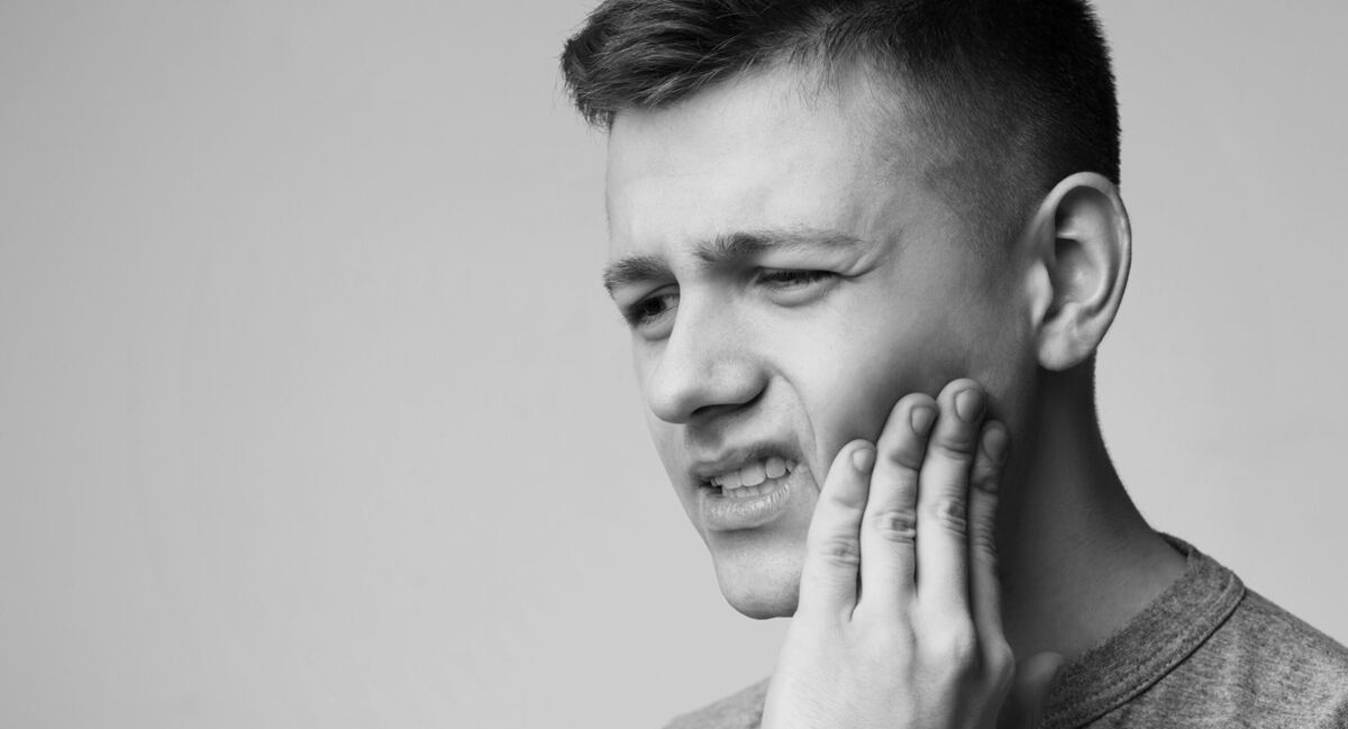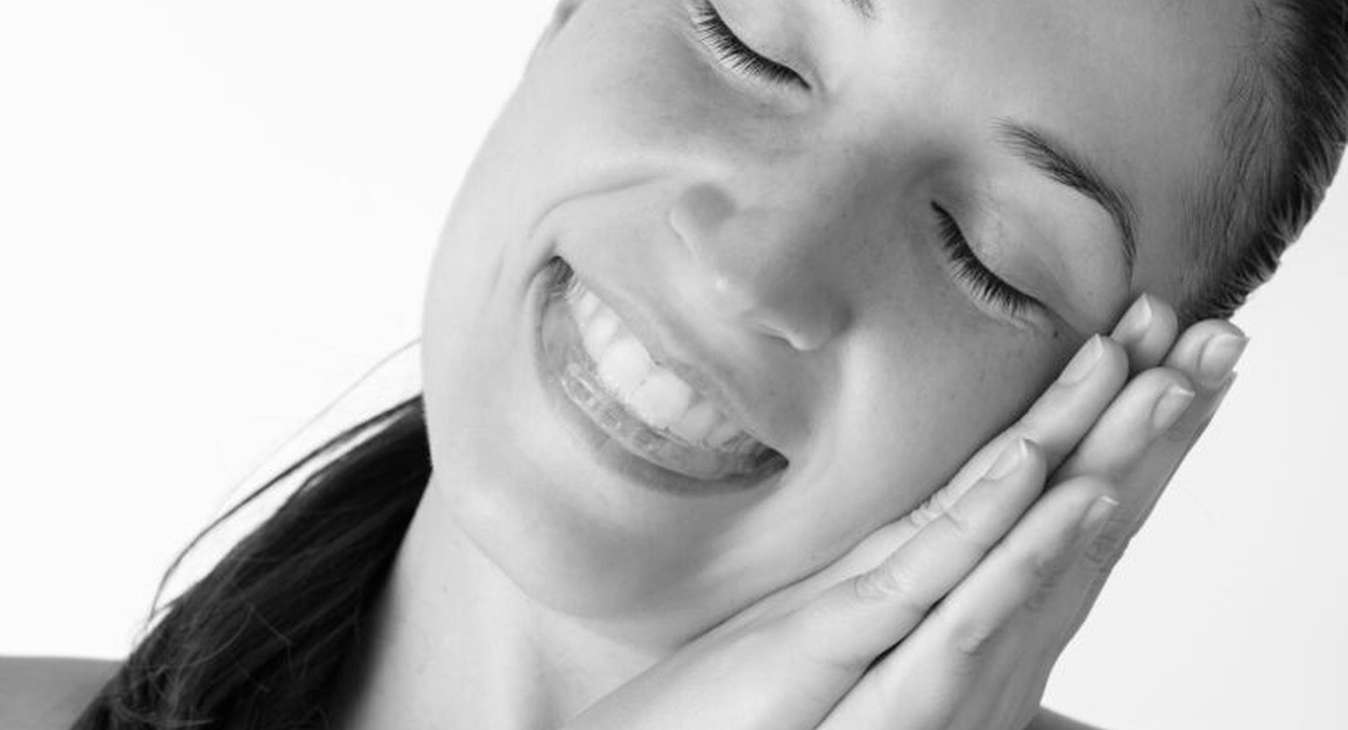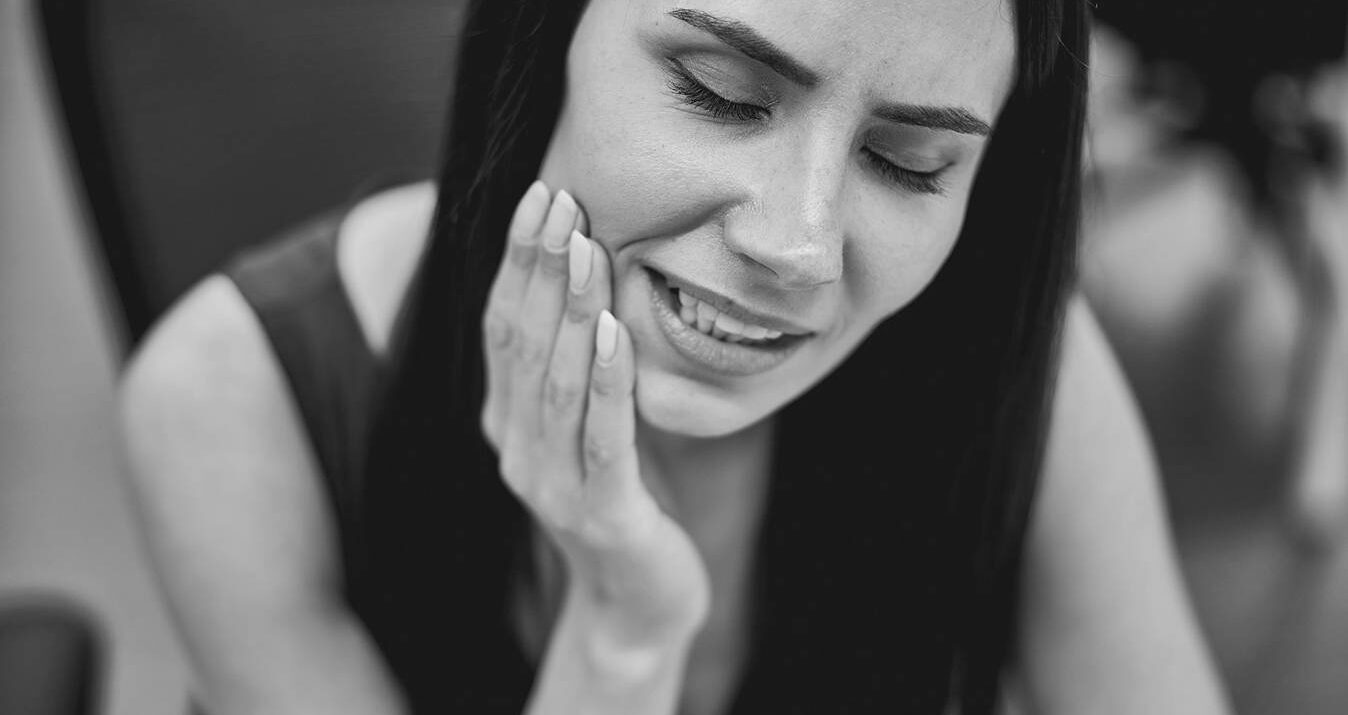What Is Teeth Grinding?
Teeth grinding, also known as bruxism, is the involuntary clenching or grinding of teeth, typically occurring during sleep. This condition can be caused by stress, anxiety, misaligned teeth, or sleep disorders. Symptoms include jaw pain, headaches, and worn-down teeth. Early diagnosis and treatment are essential to prevent long-term tooth and gum damage and alleviate discomfort.
What to Know About Bruxism Treatments in Argentina.
Teeth grinding, or bruxism, can cause discomfort and damage over time. Knowing its causes and finding solutions can help protect your teeth and improve your oral health. Here we explain everything about bruxism and guide you how to manage it.
- Do You Have Sensitive Teeth
- Do I need to Protect My Teeth?
- How to Combate Teeth Grinding


How do I know if I am Teeth Grinding?
If you often wake up with a sore jaw or dull headaches, you might be grinding your teeth without realizing it. Sensitivity to hot or cold foods can also be a sign, as grinding wears down enamel over time. If this sounds familiar, getting it checked can help protect your teeth and prevent discomfort from getting worse.
How Different Treatments for Teeth Grinding Can Help You Out.
There are several options to make sure the discomfort of teeth grinding will disseapear and no further damage will be caused to both your teeth, the cervical areas and your gums. We listed the most common ones in this section.
Mouth Guards and Splints
Types of mouth guards. Custom-fitted mouth guards, made from impressions of your teeth, offer superior protection and comfort compared to over-the-counter options, effectively preventing dental damage and improving sleep.
Benefits and how they work. Mouth guards cushion teeth, reducing wear and jaw pain. They evenly distribute pressure, minimizing damage and enhancing sleep quality.
What you will notice: You will experience less jaw pain and improved sleep quality with a mouth guard.
Dental Corrections
Adjustments to teeth alignment. Orthodontic treatments like braces or clear aligners correct alignment issues, reducing grinding and improving your bite, ensuring balanced pressure during biting and chewing.
Use of crowns and reshaping teeth. Dental crowns and reshaping restore function and appearance for damaged teeth, protecting them from further harm and reducing irritation.
What you will notice: You will have a more comfortable bite and improved tooth functionality.
Therapies and Exercises
Physical therapy. Exercises that strengthen and relax jaw muscles reduce tension and prevent grinding, alleviating muscle strain and improving jaw function.
Relaxation techniques. Meditation, deep breathing, and progressive muscle relaxation manage stress and anxiety, reducing teeth grinding. What you will notice: Reduced stress and fewer bruxism symptoms with these techniques.
Behavioral therapy. Behavioral therapy modifies habits contributing to bruxism through stress management and cognitive-behavioral approaches.
What you will notice: Improved mental well-being and reduced grinding incidents.
Innovative Treatments
Latest advancements in mouth guard technology. Custom-fitted, durable mouth guards and smart guards with sensors provide enhanced protection and real-time data for personalized adjustments.
Biofeedback therapy for stress management. Biofeedback helps control physiological responses, reducing stress and bruxism. What you will notice: Better stress management and fewer grinding episodes.
Cognitive-behavioral therapy (CBT) tailored for bruxism patients. CBT identifies and changes negative thought patterns, managing stress and reducing symptoms.
What you will notice: Long-term relief from grinding and improved mental health.
Advanced Treatments
Botox for bruxism. Botox relaxes jaw muscles, reducing involuntary grinding and pain. What you will notice: Significant pain reduction and decreased grinding after treatment.
Medication options. Medications like muscle relaxants and stress-relief drugs help manage bruxism symptoms. What you will notice: Reduced jaw tension and a calmer state of mind.
Surgical options (if applicable). Corrective jaw surgery addresses structural issues causing bruxism, providing a permanent solution.
What you will notice: A more balanced bite and long-term relief from bruxism.
Holistic Treatment Options
Integrative approaches combining dental and medical treatments. Combining dental treatments with medical interventions like stress management provides a comprehensive health improvement plan. What you will notice: Holistic health improvement and reduced bruxism symptoms.
Role of nutrition and dietary adjustments in managing bruxism. A balanced diet and reduced stimulant intake help manage bruxism. What you will notice: Improved overall health and fewer bruxism symptoms.
Importance of exercise and physical fitness. Regular exercise reduces stress and improves sleep, crucial for managing bruxism. What you will notice: Enhanced physical fitness and reduced teeth grinding.
Procedures of Teeth Grinding Treatments.
There are different treatments for teeth grinding. In this section, we outline the most common ones and what to expect during the process, from initial visits to recovery. You’ll also find details on pre- and post-treatment care, helping you understand how each approach supports your long-term dental health. Watch the video to get a quick understanding.
Steps Before, During and After
The Most Common Teeth Grinding Treatments.
As there are quite a few treatment options when patients experience the discomfort and negative effects of bruxism. Below we have outlined briefly the most common ones to give you a good idea about the options.
Custom-Fitted Mouth Guards
Before Procedure: An initial consultation is held to discuss symptoms and determine if a custom-fitted mouth guard is appropriate. Impressions of your teeth are taken to create a mold.
During Procedure: At a follow-up visit, the custom-fitted mouth guard is adjusted for a perfect fit.
After Procedure: Regular use at night is essential. Schedule periodic check-ups to ensure the guard remains effective and in good condition.
Most essential to remember: Consistently wear the mouth guard at night for effective protection and attend regular check-ups to maintain its fit and condition.
Orthodontic Treatments
Before Procedure: An orthodontic consultation includes X-rays, photographs, and dental impressions to create a treatment plan.
During Procedure: Braces are applied, or aligners are provided. Regular visits are required for adjustments and progress monitoring.
After Procedure: Once treatment is complete, retainers may be necessary to maintain alignment. Follow-up visits ensure teeth remain in their new positions.
Most essential to remember: Attend all scheduled appointments for adjustments and follow care instructions diligently to ensure effective treatment and oral health maintenance.
Dental Restorations
Before Procedure: The dentist prepares the damaged tooth, removing decay and shaping it for the crown. Impressions are taken to create a custom crown.
During Procedure: A temporary crown is placed to protect the tooth until the permanent crown is ready. At the next visit, the permanent crown is fitted and cemented in place.
After Procedure: Avoid hard foods and practice good oral hygiene to protect the crown. Regular dental check-ups ensure the crown stays secure and functional.
Most essential to remember: Maintain excellent oral hygiene and attend regular dental visits to ensure the longevity and functionality of your crown.
Botox Injections
Before Procedure: A consultation is held to discuss symptoms and determine if Botox is suitable. The dentist explains the procedure and potential side effects.
During Procedure: Botox is injected into specific jaw muscles to relax them, reducing grinding. The procedure is quick and involves minimal discomfort.
After Procedure: Results typically appear within days and last for several months. Follow-up injections are necessary to maintain effectiveness.
Most essential to remember: Schedule follow-up appointments for maintenance injections and promptly report any side effects to ensure ongoing effectiveness and safety.
Cost of Bruxism Treatments:
Argentina vs. USA.
In general, the cost of curing teeth grinding, will usually not get you high bills at the dental office. Below we compared the prices of bruxism treatments between Argentina and the US.
| Teeth Grinding (Bruxism) Treatment | US & Canada | Argentina |
|---|---|---|
| Initial Consultation | $100-$250 | $50-$120 |
| Dental X-rays (If Needed) | $50-$200 | $20-$60 |
| Custom Night Guard | $300-$800 | $100-$300 |
| Stress Management Therapy | $100-$500 | $50-$200 |
| Follow-Up and Adjustments | $100-$300 | $50-$150 |
| Total Cost of Bruxism Treatment | $650-$2,050+ | $270-$830+ |

The Impact of Clenching and Bruxism in Daily Life.
Teeth grinding or clenching can affect your daily life in many ways. It may cause jaw pain, headaches, and even TMJ disorders, making chewing uncomfortable. Over time, grinding can wear down your teeth, leading to enamel erosion, fractures, and sensitivity. If you want to understand more about how this impacts your oral health, explore our in-depth article on the topic.
Which Dentist For Teeth Grinding in Buenos Aires
Would Be The Best Choice?
Choosing the right country and clinic for teeth grinding treatment is important. This section helps you find safe, reliable options for effective care. Have a look at our detailed guide to know how to choose a dental clinic abroad.
Detailed Guide
To Choose a Dental
Clinic Abroad
Personalized Comprehensive Plan.
Why it’s important: A personalized treatment plan ensures your bruxism is managed effectively, addressing both immediate discomfort and long-term prevention. A tailored approach helps protect your teeth and improve overall oral health.
What to look for: Look for a dental office that offers custom mouth guards, orthodontic solutions, or additional treatments like Botox or physical therapy. Ensure they provide clear explanations on expected outcomes, costs, and long-term care.
Essential to remember: Choose a dentist with experience in bruxism who offers a treatment plan suited to your specific needs and lifestyle, ensuring lasting relief and protection.
A Dentist Specialized in Bruxism.
Why it’s important: Choosing a dentist experienced in bruxism ensures you receive the right diagnosis and treatment. Proper care can prevent further damage, reduce discomfort, and protect your teeth in the long run.
What to look for: Look for professionals with expertise in TMJ disorders and bruxism. Check credentials, patient reviews, and available treatment options to ensure the approach fits your needs.
- Check Online Reviews
- Verify Accreditations
- Always Schedule an Online Call
- When Its Very Cheap, Be Cautious
Essential to Know For Teeth Grinding Therapy in Buenos Aires.
Before actually engaging further to seek for help when you face bruxism, it is important to understand what are certain essentials things to keep in mind related to your teeth grinding therapy in Buenos Aires.
Accurate Diagnosis
Understanding what causes your teeth grinding is the first step toward relief. In Buenos Aires, dentists use digital bite analysis and electromyography (EMG) to assess your situation. With a treatment plan designed just for you, managing bruxism becomes much more effective.
Integral Treatment Approach
Bruxism isn’t just about grinding—it’s about what’s causing it. A mix of custom mouth guards, relaxation techniques, and behavioral therapy can help protect your teeth and ease the tension in your jaw. A plan tailored to you makes all the difference.
Bite Analysis and EMG
Clinics in Buenos Aires often use the latest technologies to diagnose and treat bruxism. Tools like digital bite analysis, electromyography (EMG), and advanced imaging techniques help create precise treatment plans. Advanced mouthguards, smart guards with sensors, and cutting-edge solutions ensure effective treatment and improved patient outcomes. With these techniques, dentists can pinpoint what’s triggering your grinding and find the best solution for you.
Custom Fitted Mouthguards
Custom-fitted mouthguards are essential for protecting teeth from grinding. Made from precise dental impressions, these guards offer superior protection and comfort compared to over-the-counter options. They help distribute pressure evenly across the jaw, reduce wear and tear on teeth, and alleviate jaw pain, making them a cornerstone in bruxism treatment. A custom-fitted mouth guard can help if grinding is worn down your teeth. Made from impressions of your teeth, it fits comfortably and protects your enamel while easing jaw tension. It’s a simple but effective way to prevent damage.
Anxiety Management Advice
Managing stress and anxiety is crucial as they are common triggers for bruxism. Techniques such as meditation, deep breathing, and progressive muscle relaxation can significantly reduce your stress levels. Behavioral therapies focus on modifying habits and stress management techniques to address the psychological factors contributing to teeth grinding.
Follow-up Care and Support
Regularly follow-up visits are crucial for monitoring the progress of your bruxism treatment. These visits allow dentists to make necessary adjustments to the treatment plan, ensuring its continued effectiveness. Regular check-ups help maintain the effectiveness of the treatment and address any issues promptly, ensuring long-term relief from bruxism symptoms.
Why Patients Value Us.
Further down, we share actual treatments and reviews of patients we have helped get teeth grinding relief in Argentina. Read in a separate section what we do different and why people choose us to get rit of their bruxism.
Why People Choose Us
Teeth Grinding Therapy.
Packages and Prices.
Explore our teeth grinding treatment options with fixed pricing. Need additional care? We’ll tailor a plan for you. All costs are clear upfront—no surprises. Please have a look at the details below!
Grinding Gone
Treatment duration between 1-3 daysSame Day Treatment
*All-In Price
-
Free Checkup
-
Scan & Pro-Cleaning
-
Professional Grinding Guard
-
Care Coach
-
Online Aftercare
*Full Porcelain Bridge Structure and for 1 Tooth
A Direct Agreement with The Dentist
Grinding Complete
Treatment duration between 1-3 daysSame Day Treatment
*All-In Price
-
Free Checkup
-
Scan & Pro-Cleaning
-
Professional Grinding Guard
-
Essential Care Treatment*
-
Online Aftercare
*Includes Fillings for Caries
A Direct Agreement with The Dentist
Grinding Makeover
Treatment duration between 2-3 daysSame Day Treatment
*Estimated Price
-
Free Checkup
-
Scan & Pro-Cleaning
-
Professional Grinding Guard
-
Smile Makeover Light*
-
Online Aftercare
*Includes a Whitening and Full Bondings
A Direct Agreement with The Dentist
Reviews of Teeth Grinding Treatments.
Although we referred a lot of patients for teeth grinding therapy in the past, overall seen it is a less known dental treatment. Have a look at the reviews of patients to get a glance how they felt afterwards.







Plan Your Intake. Online. For Free.
If you are experiencing discomfort in your gums and suspect you are teeth grinding, plan a free online intake with one of our associated dentists to assess what can be done to prevent further issues and solve your discomfort immediately.
Frequently Asked Questions (FAQs) on Teeth Grinding and Treatments.
Since bruxism therapy is a less common treatment and usually noticed by a patient by its symptoms, we have listed certain frequently asked questions by our patients for you.
Why am I suddenly grinding my teeth when I sleep?
Suddenly grinding your teeth at night, known as sleep bruxism, can be triggered by several factors, including increased stress or anxiety, changes in sleep patterns, or the side effects of certain medications. Sleep disorders, such as sleep apnea, may also contribute. Managing stress and seeking treatment, like using a custom mouthguard, can help alleviate the issue.
How do I stop my teeth from grinding overnight?
To stop grinding your teeth overnight, consider these strategies:
- Use a Nighttime Mouth Guard: Protects your teeth from wear and tear.
- Practice Stress-Relief Techniques: Relax before bed with deep breathing or gentle jaw massages.
- Be Aware of Clenching Habits: Pay attention to daytime clenching.
- Avoid Chewy Foods: Reduce strain on your jaw muscles.
- Exercise Regularly: Helps alleviate stress that can cause bruxism.
These methods can help reduce or prevent nighttime teeth grinding.
Does sleeping with a mouth guard help?
Sleeping with a mouth guard can be highly beneficial for those who grind their teeth or experience jaw discomfort. A mouth guard helps to protect your teeth from wear and tear caused by grinding, reduces the risk of jaw pain, and alleviates symptoms associated with TMJ disorder. Additionally, it can help minimize snoring, contributing to a better night’s sleep.
What kind of night guard is best for clenching?
When choosing a night guard for clenching, an upper night guard is often considered the best option. It is designed to provide a cushion between the upper and lower teeth, reducing the impact of clenching, which typically involves the teeth coming together forcefully during sleep. This type of guard is effective in preventing damage and alleviating discomfort associated with clenching.
How damaging is teeth grinding?
Teeth grinding, also known as bruxism, can be highly damaging if left untreated. Over time, it can lead to cracked, loosened, or even lost teeth. Additionally, grinding can cause significant jaw problems, including pain and dysfunction. It’s important to address bruxism early to prevent these serious issues and protect your oral health.
How to heal bruxism?
To heal bruxism, a combination of treatments may be necessary. Common approaches include using a mouthguard to protect teeth during sleep, practicing stress management techniques like meditation or yoga, and performing jaw muscle exercises. In some cases, Botox injections or muscle relaxants may be recommended. Avoiding chewy foods and using warm compresses can also help alleviate symptoms.
Is there a natural way to stop grinding your teeth at night?
Yes, there are natural ways to stop grinding your teeth at night. Stress management techniques such as yoga and meditation can help reduce nighttime teeth grinding. Additionally, using warm compresses on the jaw before bed and avoiding stimulants like caffeine can also alleviate bruxism. Practicing proper sleep hygiene and staying hydrated are other effective natural remedies.
What can I put in my mouth at night to stop grinding teeth?
To prevent teeth grinding at night, using a custom-made night guard is highly effective. This dental device fits your teeth precisely, offering better comfort and protection than over-the-counter options. Wearing a night guard consistently can help reduce the damage caused by sleep bruxism, preventing teeth clenching and protecting your smile.
What happens if teeth grinding is left untreated?
If teeth grinding is left untreated, it can result in serious consequences such as sleep disorders, significant dental damage like tooth erosion, and loose or cracked teeth. It may also lead to Temporomandibular Joint (TMJ) disorder, which causes pain and discomfort in the jaw. Addressing teeth grinding early can prevent these complications.

